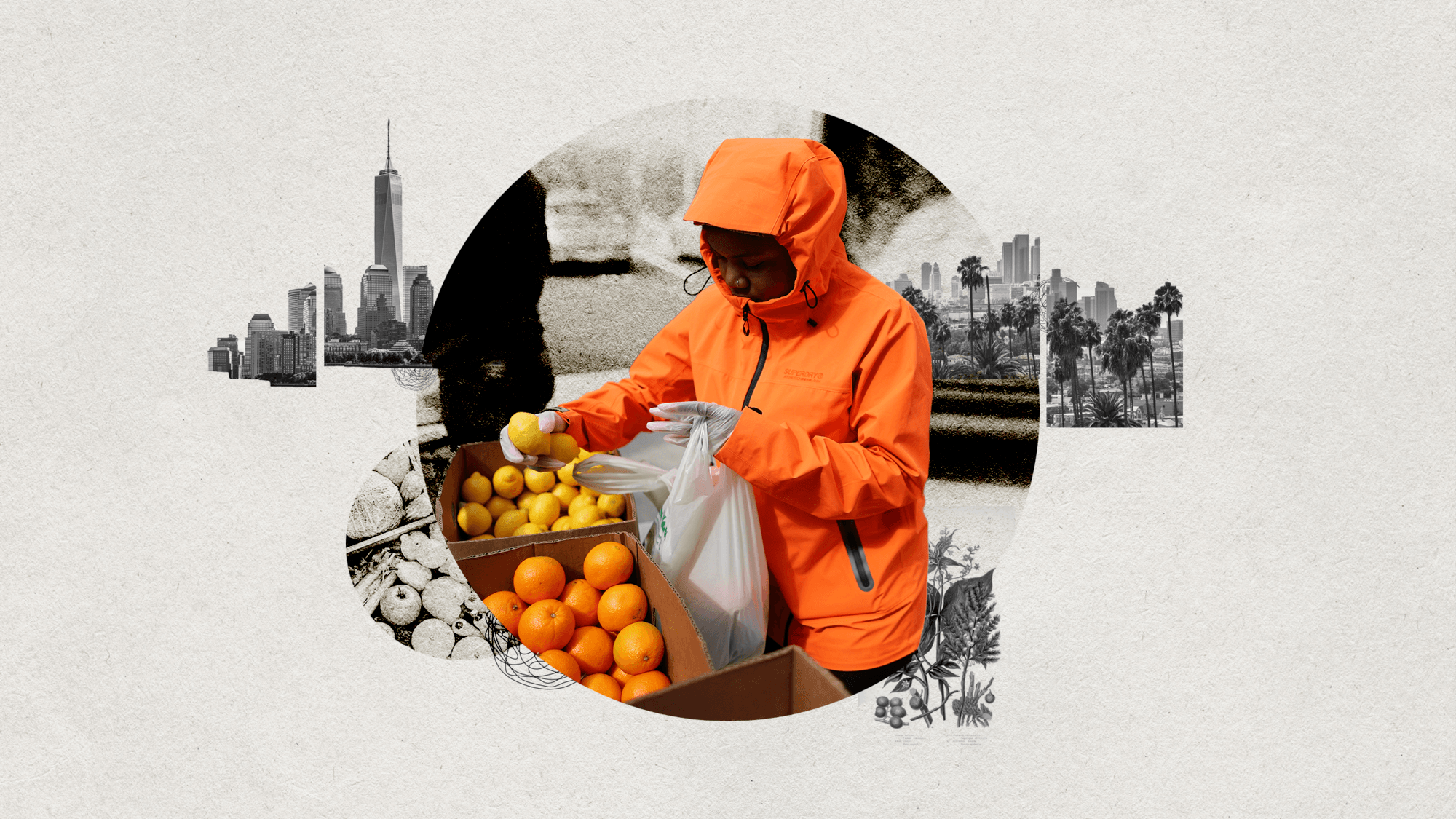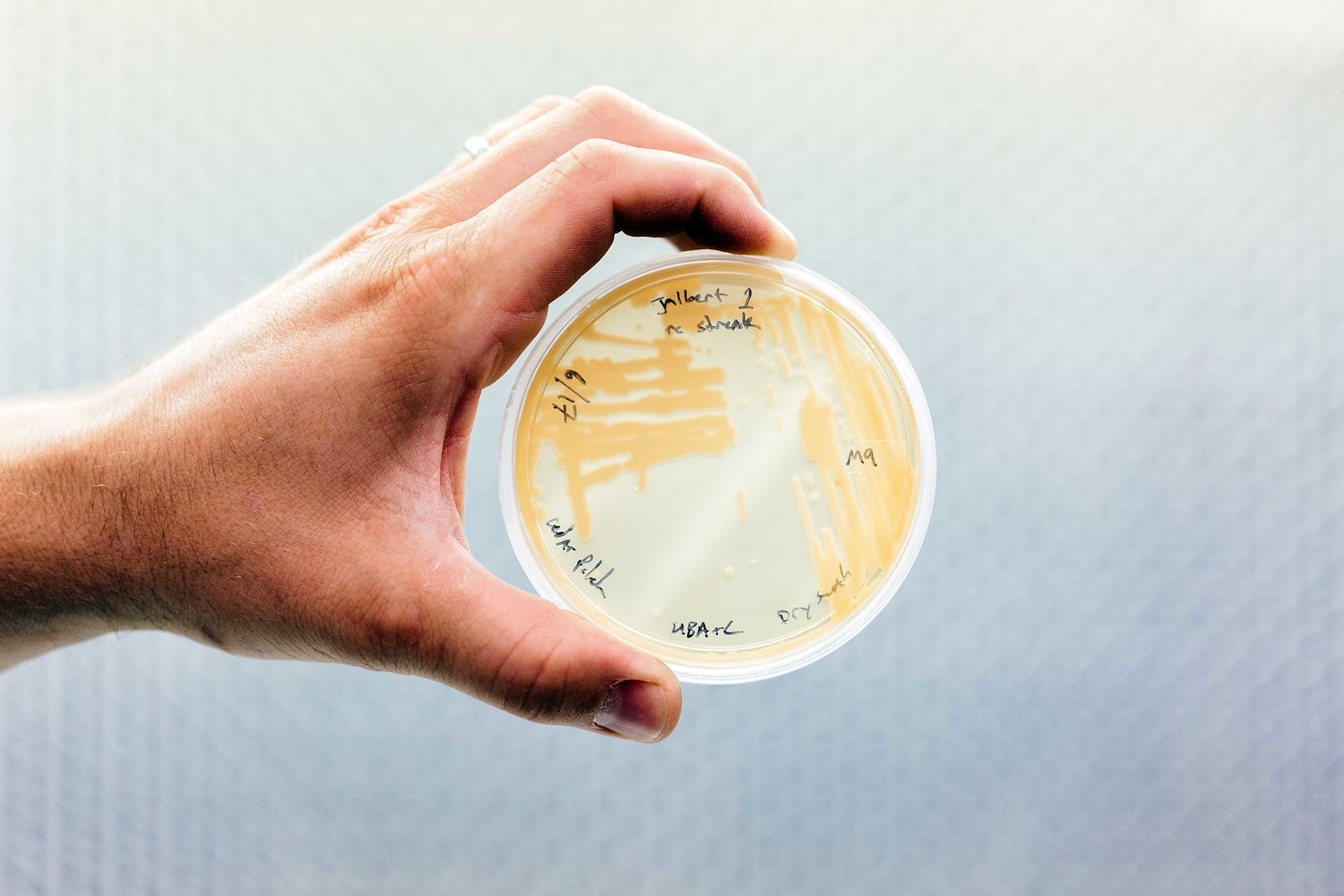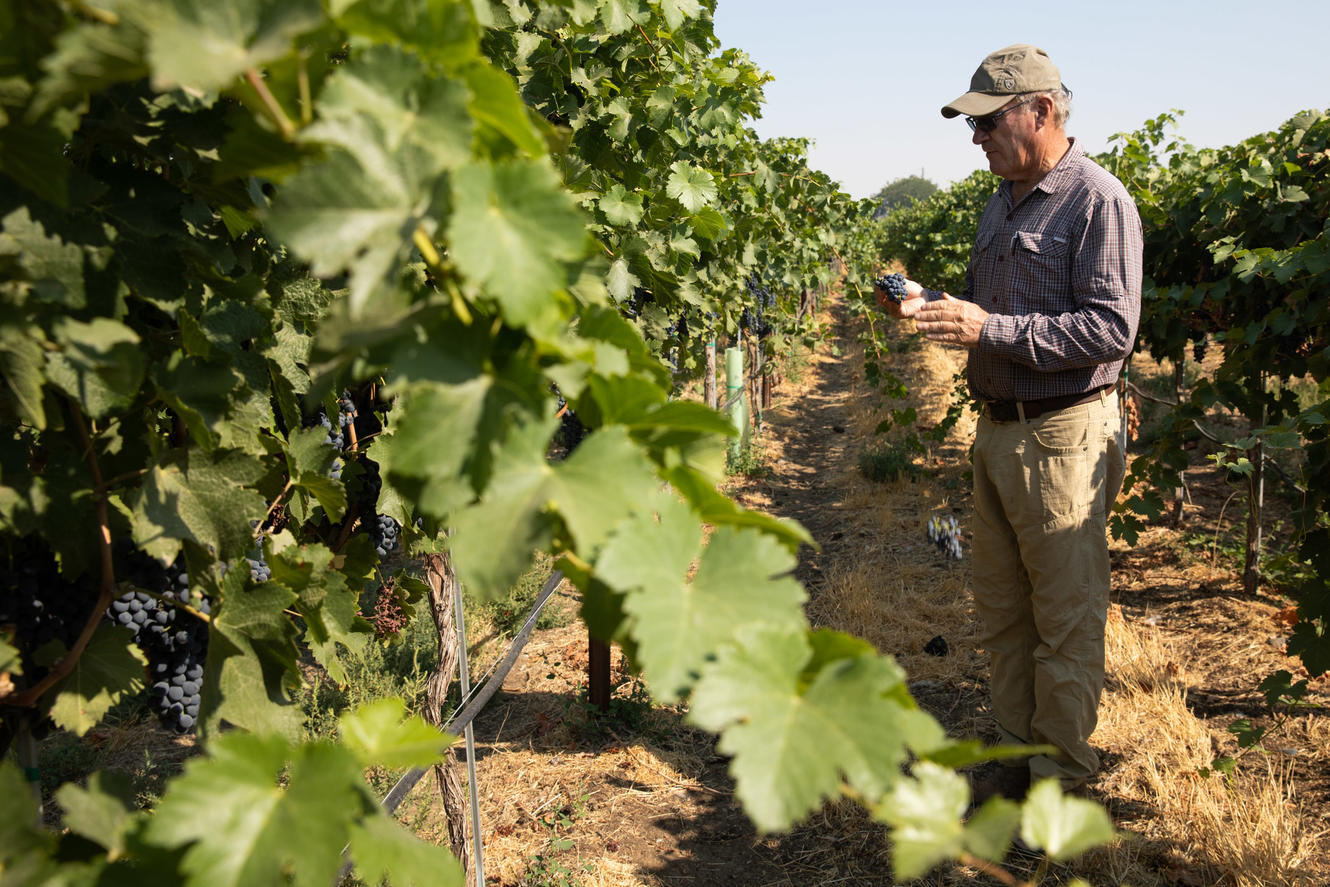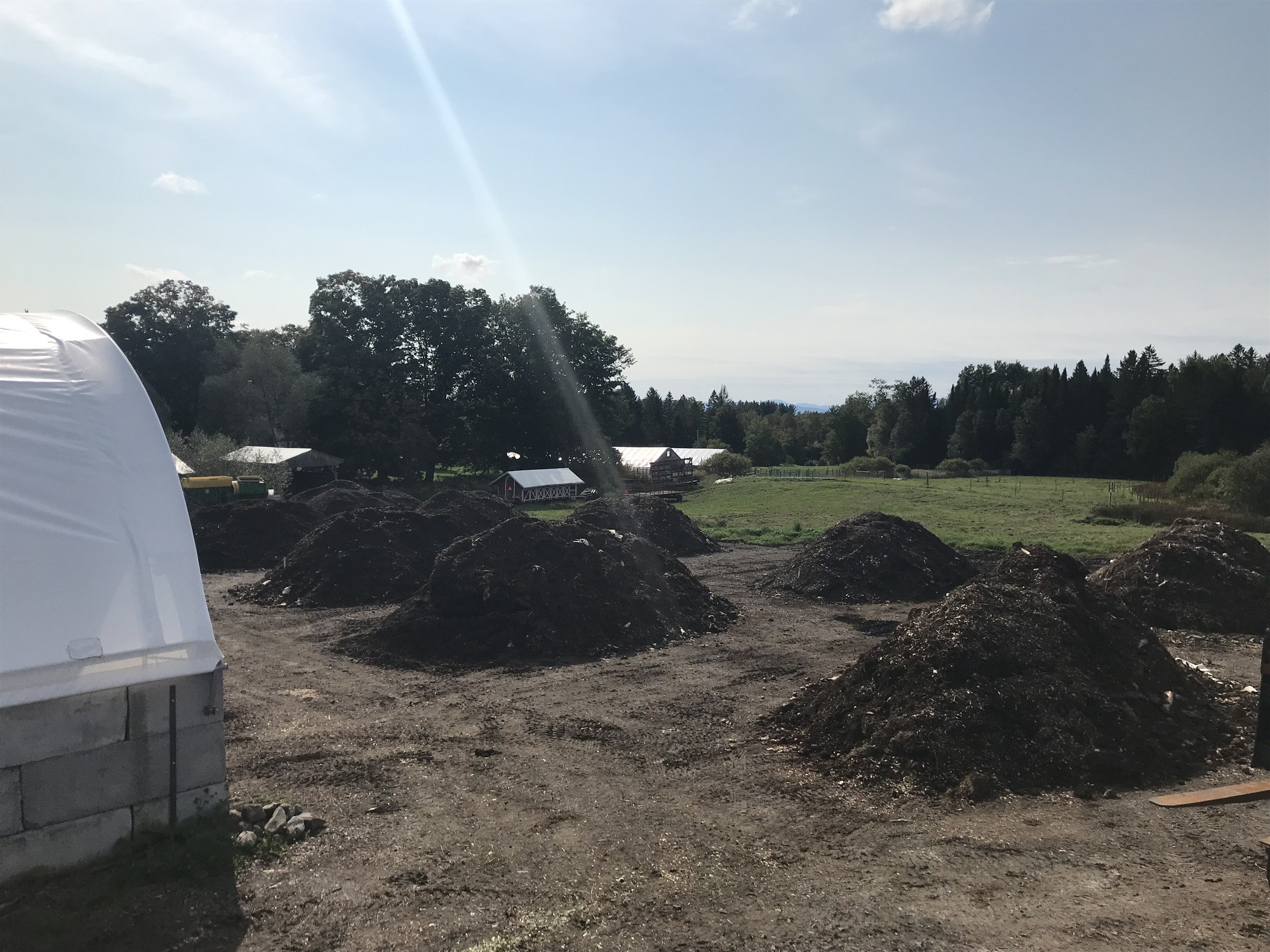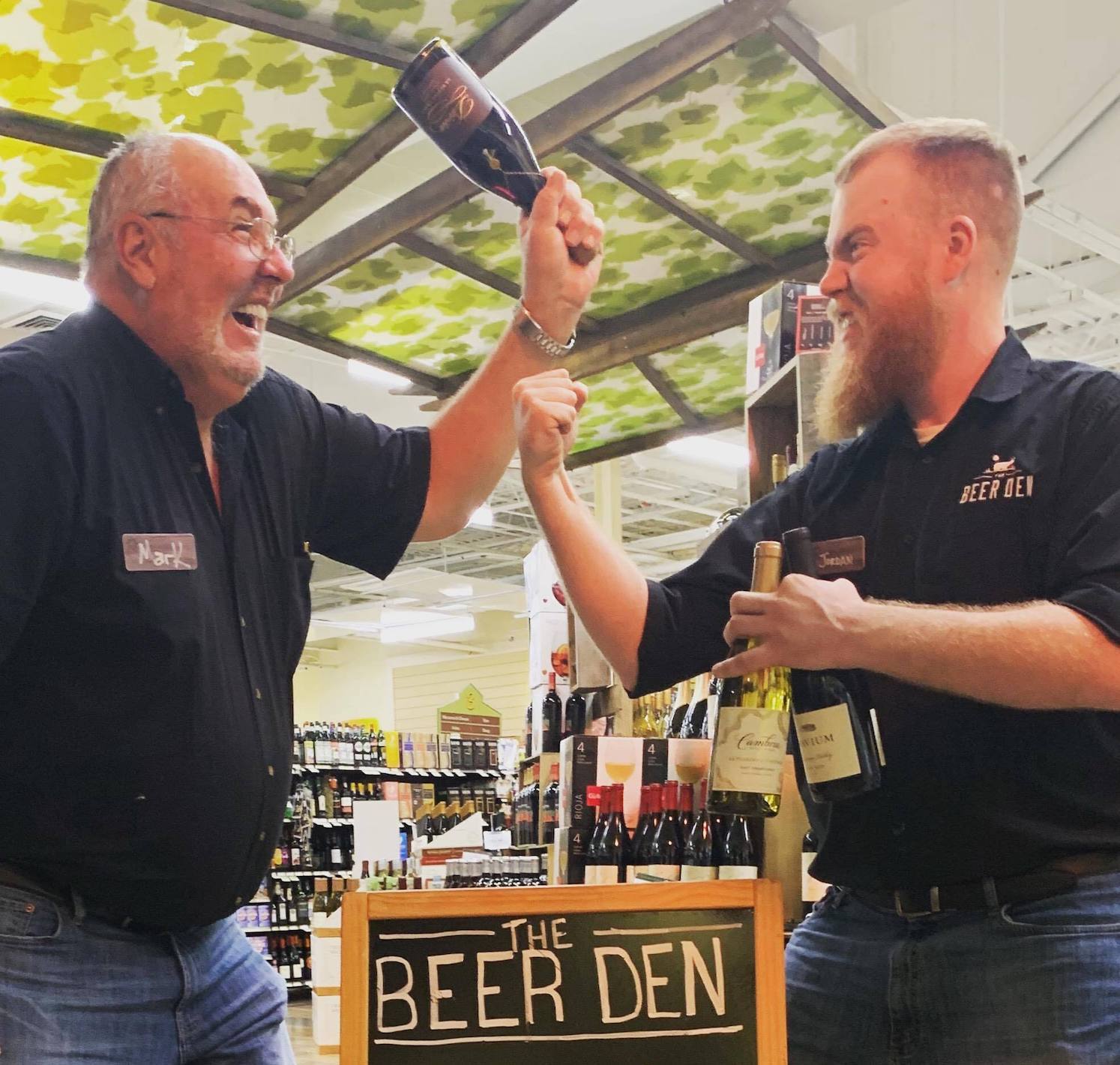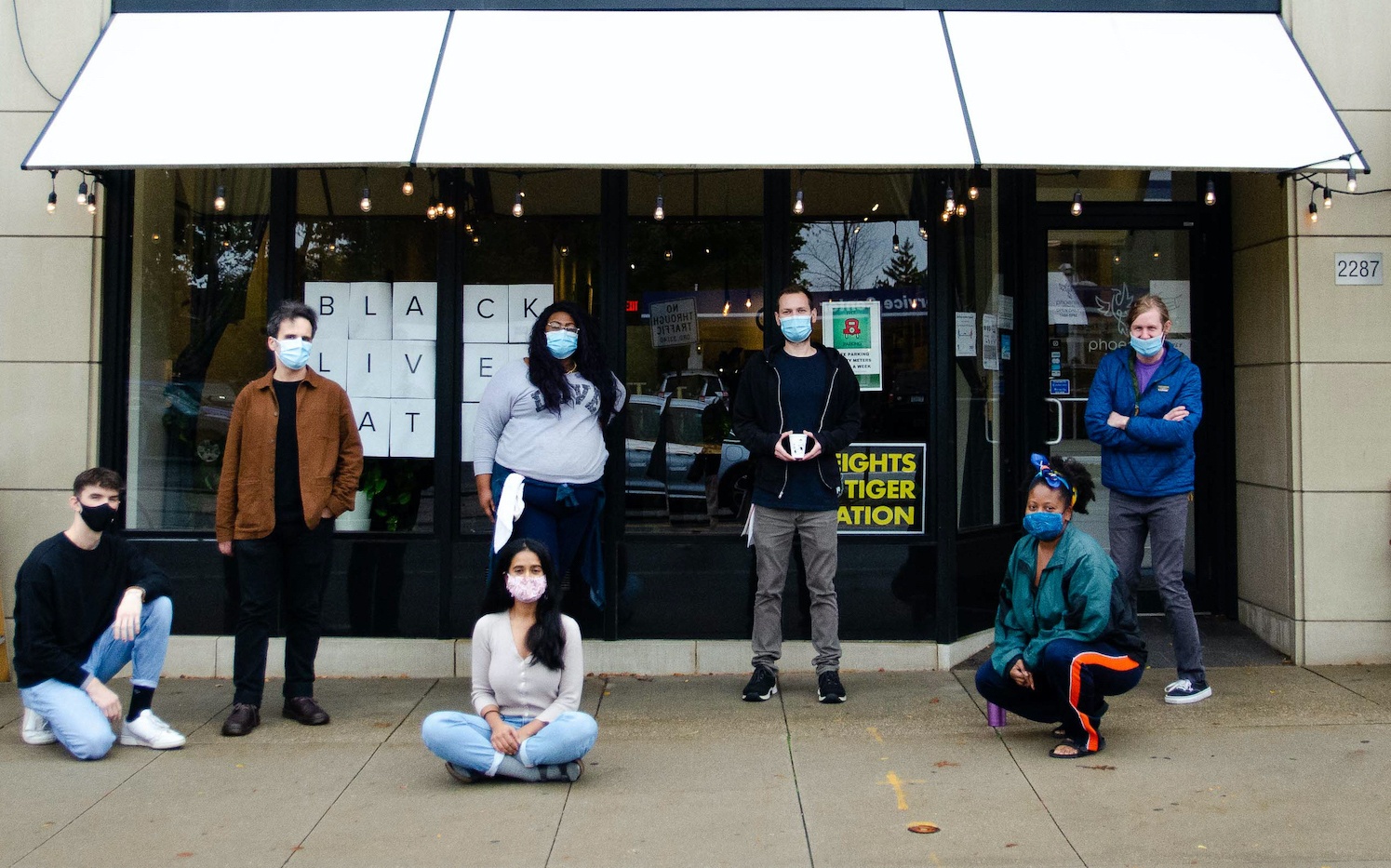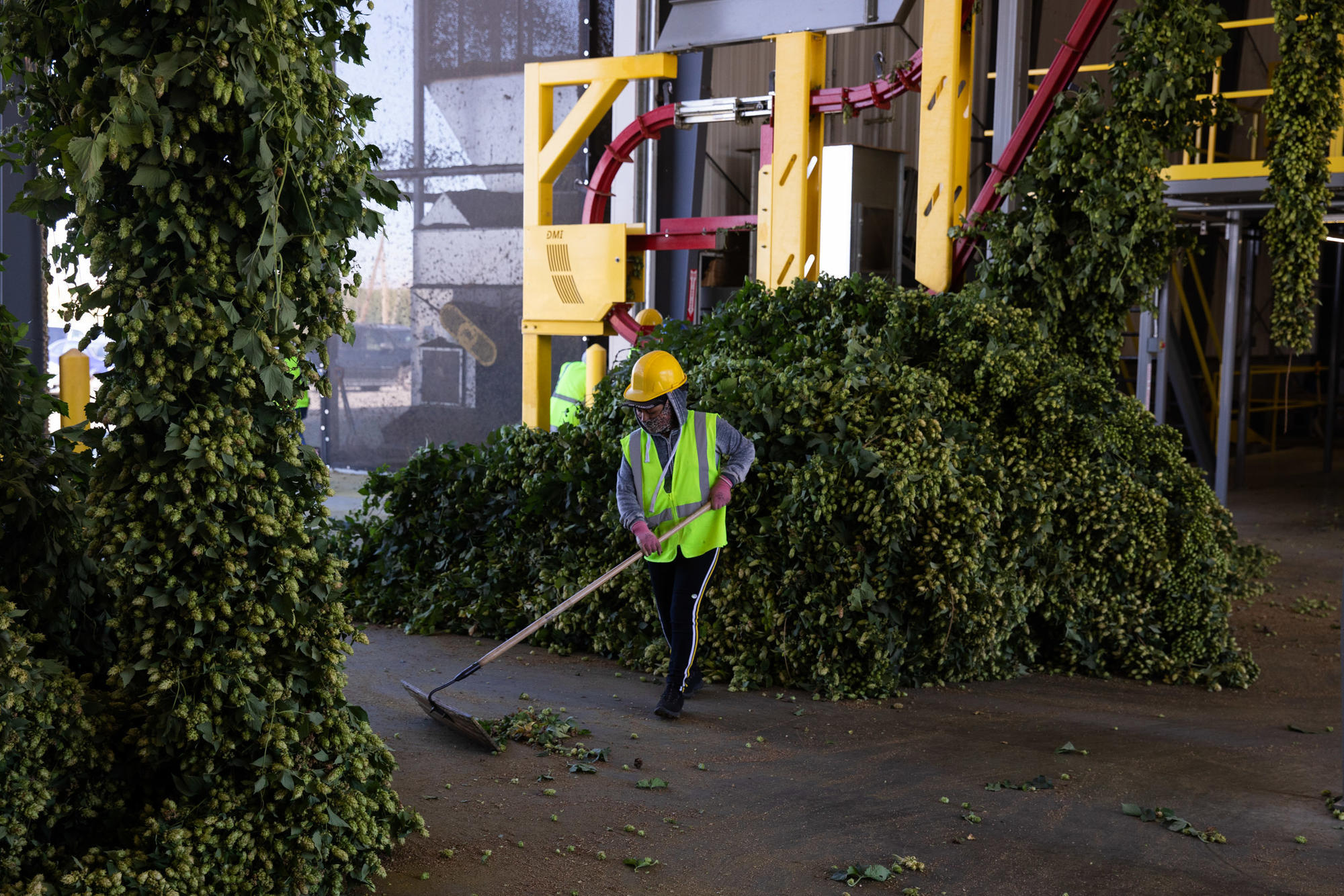
Matt M. McKnight/Crosscut
As breweries work toward carbon-neutral beers and facilities, the hops industry looks to align with that commitment.
With the rise of craft breweries in the mid-2000s, Washington hop growers went from anonymous commodity suppliers for multinational beer makers to collaborators with primarily small, independent operators that used hops to shape the flavor of their beverages.
Pictured above: Romina Atzin sweeps up harvested hops at Perrault Farms in Toppenish in Yakima County on Sept. 16, 2021. Washington has 71% of the more than 60,000 acres of hops planted in the U.S. as of June. Nearly all of that acreage is in the Yakima Valley.
Every September, breweries from across the world visit the Yakima Valley to tour hop yards and processing plants and negotiate their hop supply years in advance. After a day of business, brewers and hop industry officials often continue the conversation over a pint of beer at a Yakima pub or restaurant.
“They want to know what’s going into their beer. They want to know how it’s produced. They actually want to be part of the growing process,” said Jeff Perrault, vice president of resources and compliance at Perrault Farms in Toppenish in Yakima County.
Being in tune with the hop production process has helped brewers create high-quality beers.
Now breweries want that collaboration to extend into addressing climate change.
The hop industry is feeling the push to address these issues to satisfy brewery customers. However, those in the industry also recognize the need to protect their businesses from the effects of climate change, including extreme heat, drought and wildfires.
A significant heat wave earlier this summer damaged this fall’s crop. In recent years, smoke from nearby wildfires has led to poor air quality for workers, and there are indications that it could impact the quality of hops.
For Perrault, a fourth-generation hop grower, addressing the changing weather conditions won’t only make brewery customers happy, but also ensure that his family can keep producing hops for generations to come.
“There’s obviously been some change — global warming or climate change,” he said. “There’s definitely a change. Farmers need to be nimble. We cannot change the weather.”
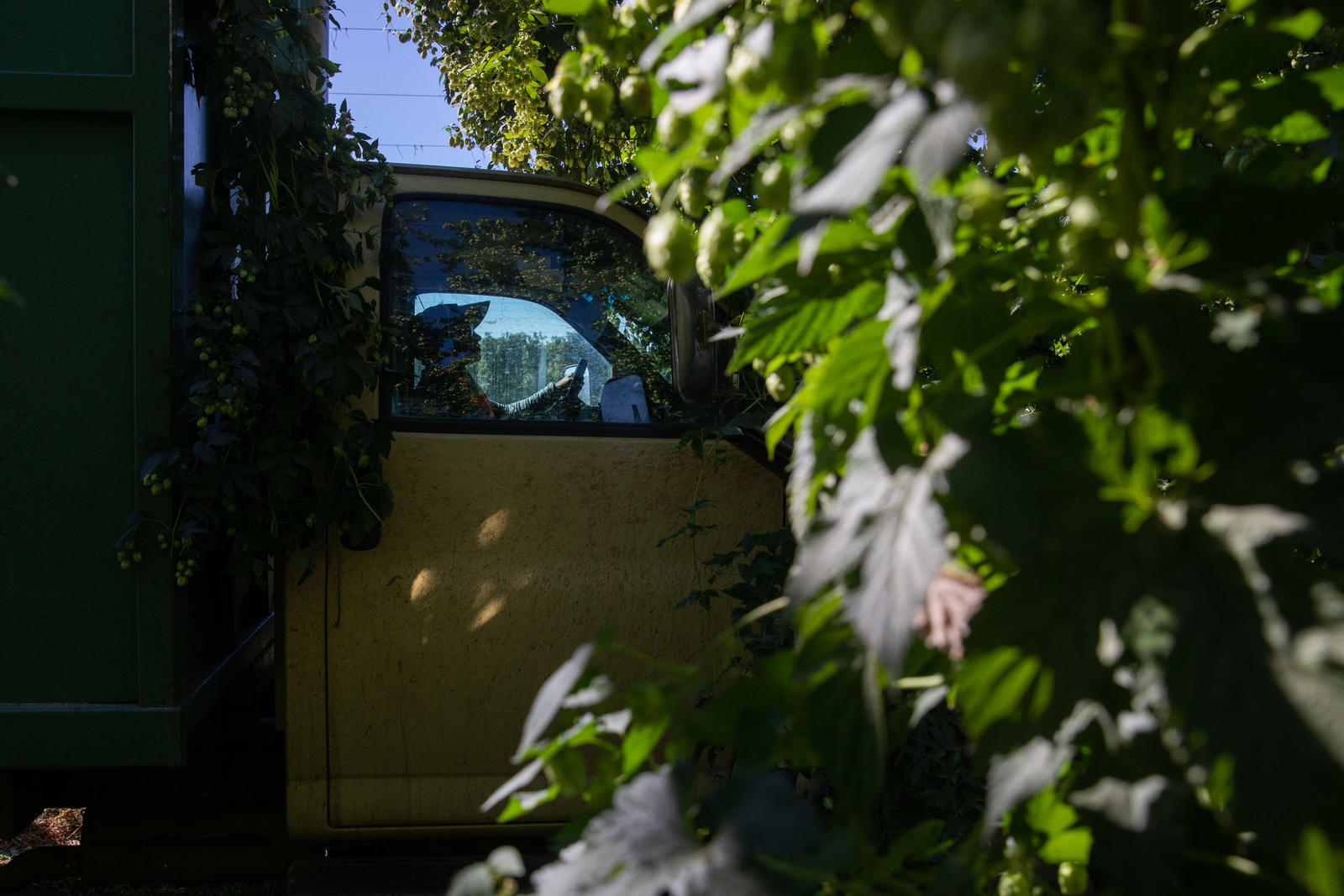
A worker in the hops field at Perrault Farms in Toppenish in Yakima County on Sept. 16, 2021.
Matt M. McKnight/Crosscut
Potential for ‘climate disruption’
The U.S. hop industry may be more sensitive to adverse effects of climate change, given that nearly all hops are grown in the Pacific Northwest and, more specifically, the Yakima Valley, said Bart Watson, chief economist of the Brewers Association, a trade association for independent craft breweries.
According to acreage figures from the U.S. Department of Agriculture, as of June, Washington had 71% of the more than 60,000 acres of hops planted in the U.S.. Nearly all of that acreage is in the Yakima Valley, with a handful of growers in other parts of the state.
In addition, many of the hops grown in the U.S. are unique and can’t be easily replaced by hops grown in other parts of the world, such as Germany, Watson said.
“There’s greater potential for climate disruption,” he said, because of the uniqueness of the Washington industry.
U.S. craft breweries may see a glimpse of that disruption with the current hop crop.
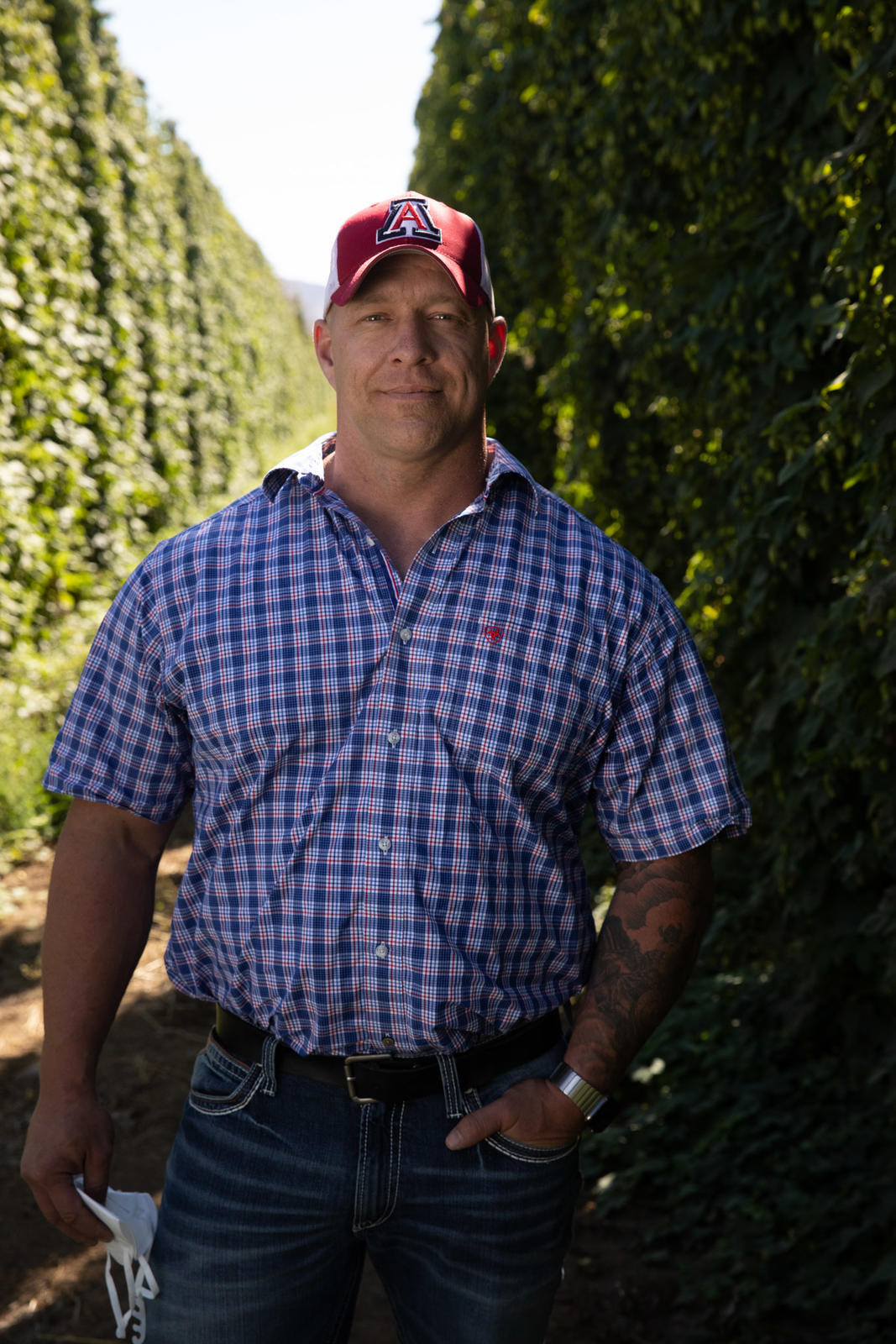
Matt M. McKnight/Crosscut
Jeff Perrault, vice president of resources and compliance for Perrault Farms in Toppenish in Yakima County. He is a fourth-generation hop grower. “There’s obviously been some change—global warming or climate change,” he said. “There’s definitely a change. Farmers need to be nimble. We can not change the weather.”
In late June, temperatures soared to triple-digits throughout the Pacific Northwest. While the Yakima Valley and other regions east of the Cascades are accustomed to triple-digit temperatures during the summer months, the temperatures, which exceeded 110 degrees Fahrenheit, were excessive.
Hops typically do well in dry and hot conditions, but sustained temperatures beyond 90 or 95 degrees “is going to affect the growth negatively,” Perrault said.
One can see the impact of June’s heatwave now, with short and thinned-out hop bines, the climbing or twining stem of the plant. The extreme heat caused many hop bines to stop growing, Perrault said. The damage wasn’t as bad as anticipated, but “all varieties” were affected in some capacity.
Wildfires and beer quality
During hop harvest, staff members at Yakima Chief Hops, a Yakima-based hop processor and supplier, smell each lot of hops as they come into their facilities to check on sensory characteristics.
Last year, when air quality was at hazardous levels, Yakima Chief Hops staff members noticed a smoky smell on a significant number of hops.
“It was something that no one ever talked about or (had) seen before,” said Tessa Schilaty, sensory research coordinator at Yakima Chief Hops. “We were alarmed and knew immediately we needed to try to figure out what was going on.”
Yakima Chief Hops set aside the smoky hops to avoid sending them to customers, and a new research effort was underway. They have found that the smoke compounds did go into the beer at detectable quantities. But there remain plenty of unanswered questions, and more information is needed to help hop growers reduce negative effects from active wildfire seasons, Schilaty said.
“We were able to make that correlation,” she said. “But its behavior in beer and behavior in storage is still poorly understood.”
Many others in the industry, including breweries, are seeking answers on how wildfire smoke affects the quality of hops and, ultimately, the beer made with those hops.
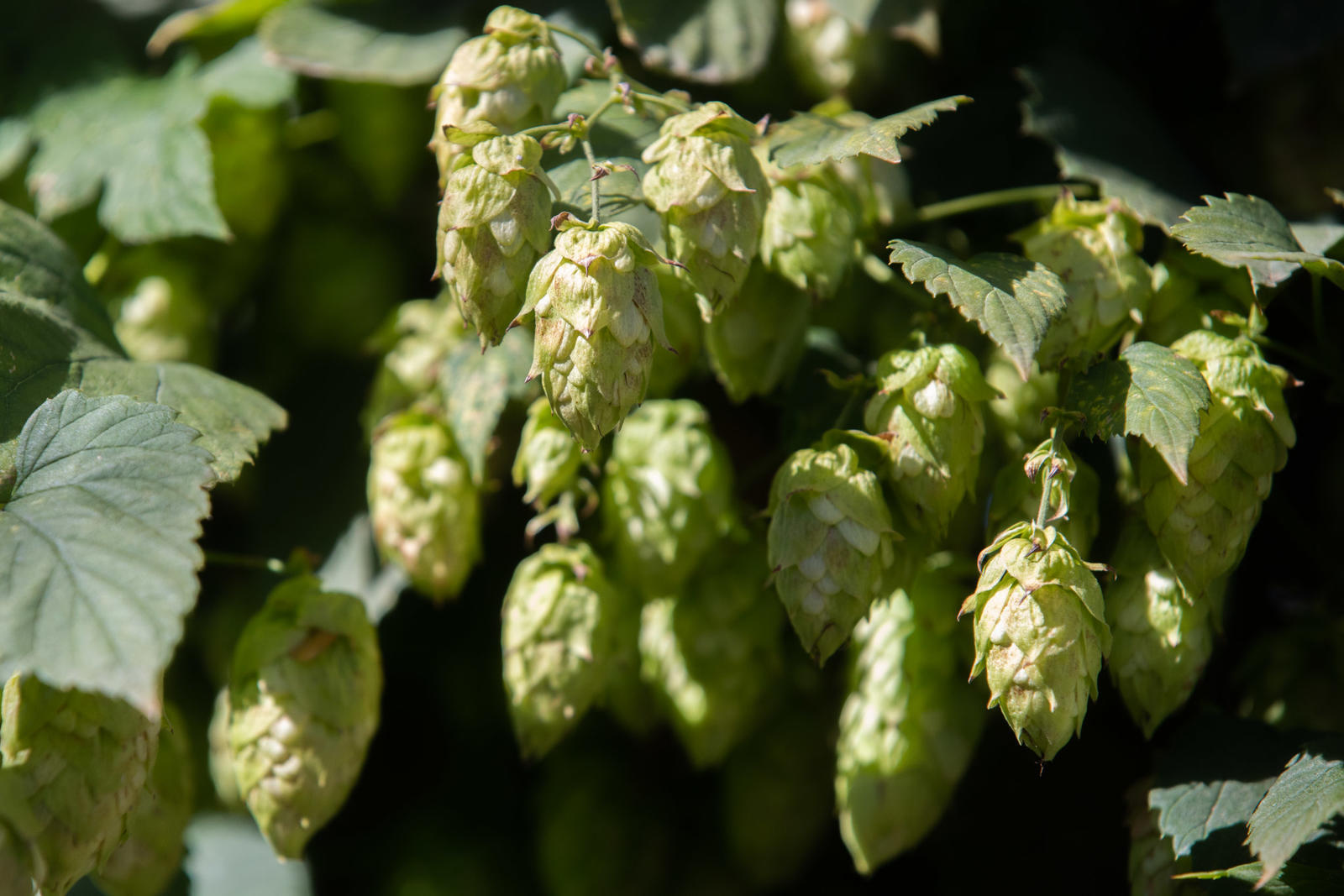
A hops plant at Perrault Farms in Toppenish in Yakima County on Sept. 16, 2021.
Matt M. McKnight/Crosscut
The issue of smoke taint and wildfire smoke impacts has also been researched for several years in the wine industry.
But the mass detection of smoke on hops grown in both Oregon and Washington last year created urgency for the hop industry, said Thomas Shellhammer, fermentation science professor at Oregon State University and an expert on hops chemistry.
“We need to get our head around this,” he said. “These [wildfire] events are not getting less frequent; they’re getting more frequent.”
Shellhammer is part of a joint research effort exploring smoke-affected hops between Oregon State University; John I. Haas, a Washington, D.C., hop supplier with a major presence in Yakima; and New Belgium Brewing Co. in Fort Collins, Colorado.
The study’s goal, which is set to be completed over several months next year, is to create a method to identify how hops — and the beers made with them — are affected by smoke, including a lexicon to describe those effects, Shellhammer said.
Shellhammer said the research is so early in the process that it isn’t clear whether hops are negatively impacted by smoke. That’s why he prefers to avoid the term “smoke taint,” because it has a negative connotation.
“We know that smoke has been part of the equation,” he said. “That may or may not affect the quality of the hop or that may or may not have a negative or positive impact to beer quality.”
Shellhammer said he knows many are looking into this issue, include hop suppliers like Yakima Chief Hops. He considers that a good thing.
“It’s one of those things where there isn’t a competitive advantage for figuring out how to deal with smoke,” he said. “The whole industry has to come together.”
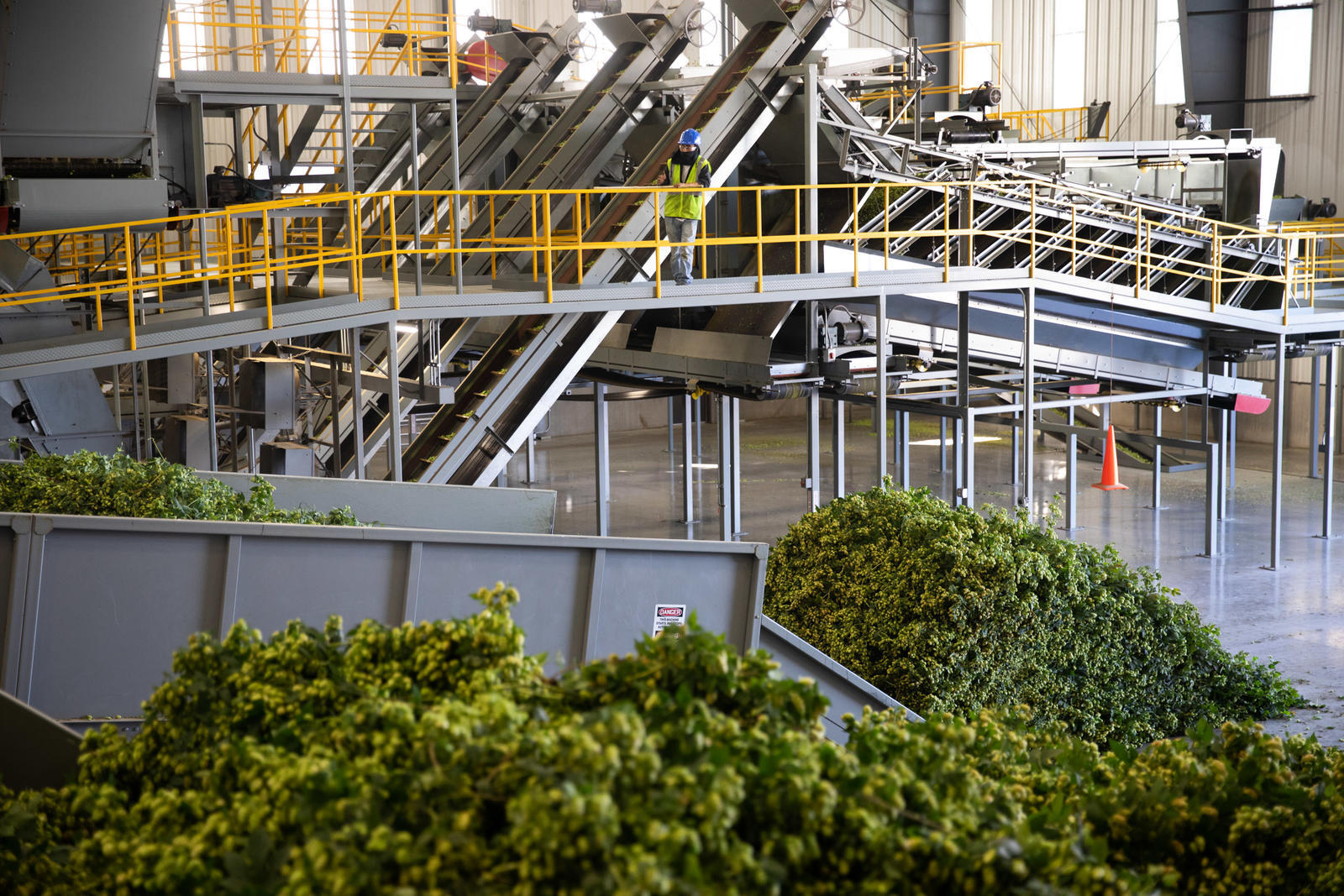
Hops are harvested and processed at Perrault Farms in Toppenish in Yakima County on Sept. 16, 2021.
Matt M. McKnight/Crosscut
Seeking information
Nearly all the beers at Aslan Brewing Co. in Bellingham are organic. That means every ingredient, such as barley and hops, must be certified organic.
Given that supplies of organic beer ingredients are limited, Aslan’s brewer depends on continuous and open communication with its suppliers to ensure it can secure those ingredients, said Layne Carter, brand and sustainability manager at Aslan Brewing.
The brewery also aims to use hops deemed Salmon-Safe, a certification extended to breweries and other entities that show best practices in minimizing harm to salmon habitats.
Using organic hops — as well as those that are Salmon-Safe — in nearly all its beers is one of several ways the brewery exhibits its commitment to sustainability and minimizing its carbon footprint.
Finding suppliers that share in that commitment is important, Carter said.
And the issue of climate change and its impacts should be part of an ongoing conversation between the brewer and suppliers, Carter said.
“It’s the suppliers having the foresight to let us know what they’re seeing,” she said.
Using organic hops — as well as those that are Salmon-Safe — in nearly all its beers is one of several ways the brewery exhibits its commitment to sustainability and minimizing its carbon footprint.
In front of one of Perrault Farms’ buildings are several signs for the different certifications it has completed, including Salmon-Safe and GLOBALG.A.P., a program that grants certification to growers that meet high standards in areas like natural resource management.
But the work doesn’t end with certification. Perrault, the farm’s vice president of compliance and resources, can point to several different things the farm has been doing to produce quality hops, while reducing environmental impact.
Attached to water pumps is a map that lays out the different areas of the farm. The color-coded map shows areas that are more rocky and require more water; other areas require much less. The pumps have pipes of different sizes to ensure that the exact volume of water goes to different areas of the hop farm.
Perrault Farms has changed its approach to pest management. It has leaned more on the presence of beneficial insects, such as stethorus beetles and ladybugs, which kill undesired pests, including mites and aphids. More than 30% of the hop bines have not been sprayed with miticides, which reduces fuel usage.
In the kiln where the hops are dried, sensors detect the weight of the hops, which is used to adjust the heat applied to the hops, potentially saving propane.
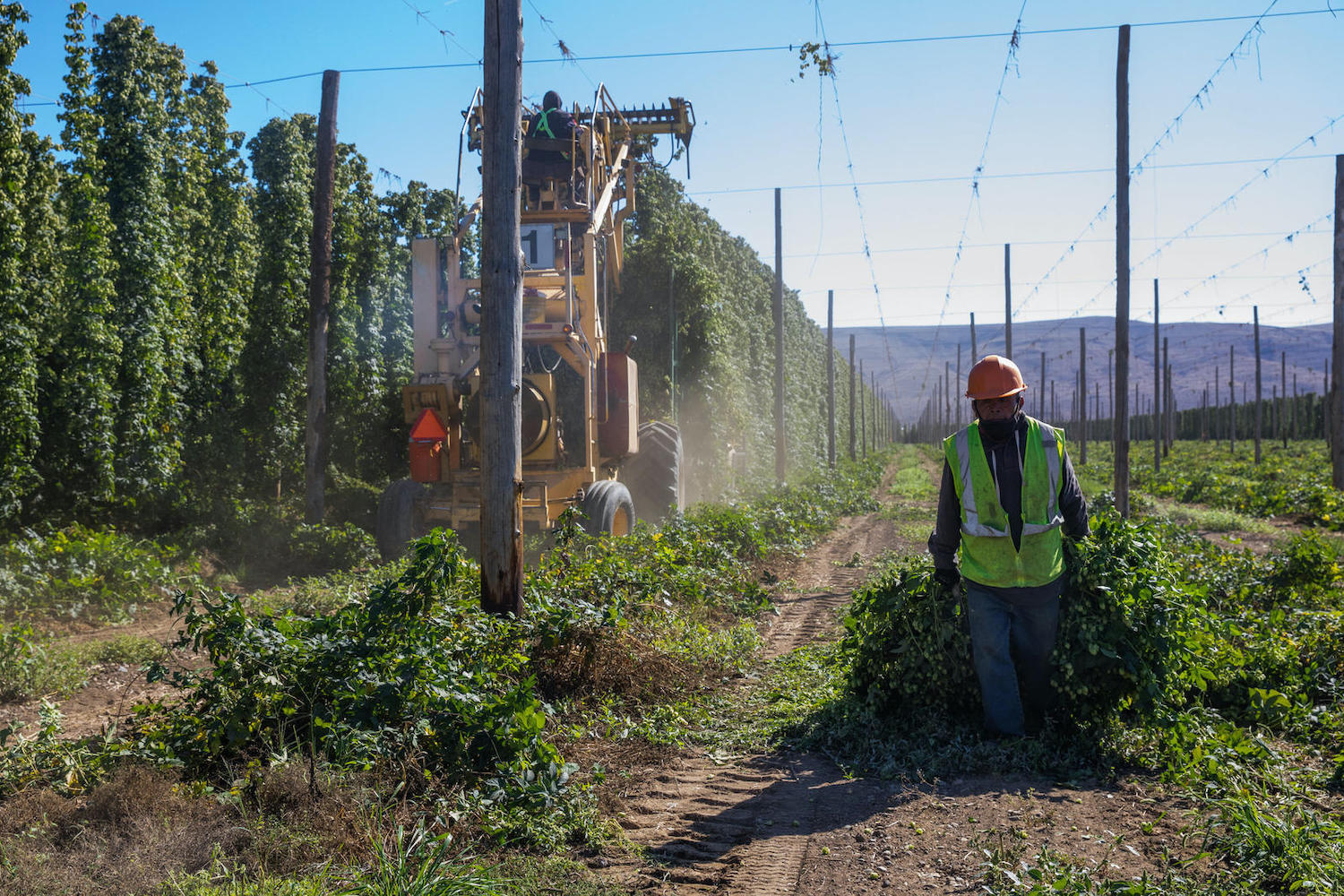
Antonio Dominguez harvests hops at Perrault Farms in Toppenish in Yakima County on Sept. 16, 2021. Dominguez has been with the farms for over 15 years.
Matt M. McKnight/Crosscut
As growers finish up the harvest of this year’s crop, it will be a few more months before the total loss is known. And breweries won’t notice the lower hop yields as they’re still using dried hops picked last year.
The impact will likely be felt by breweries that depend on the open market for those varieties, said Kevin Quinn, co-owner of Bale Breaker Brewing Co. in Moxee, one of the state’s largest craft breweries. The brewery is adjacent to the hop yards of Loftus Ranches, which the same family runs.
Quinn said the yields might be lower because of the heat, but initial assessments of the hops indicate that there wasn’t a loss in quality.
Quinn noted that barley, another key ingredient in beer, has also seen yield decreases from the heat and drought.
Like Bale Breaker, breweries that secure contracts for hops and barley with suppliers in advance should still get the varieties they want this year, but they won’t be immune forever if reduced yields continue, Quinn said.
Strong hop volume in recent years means the hop industry can weather a year or two of depressed yields, but “continued years of below-average yields of barley and hops could be difficult,” Quinn said.
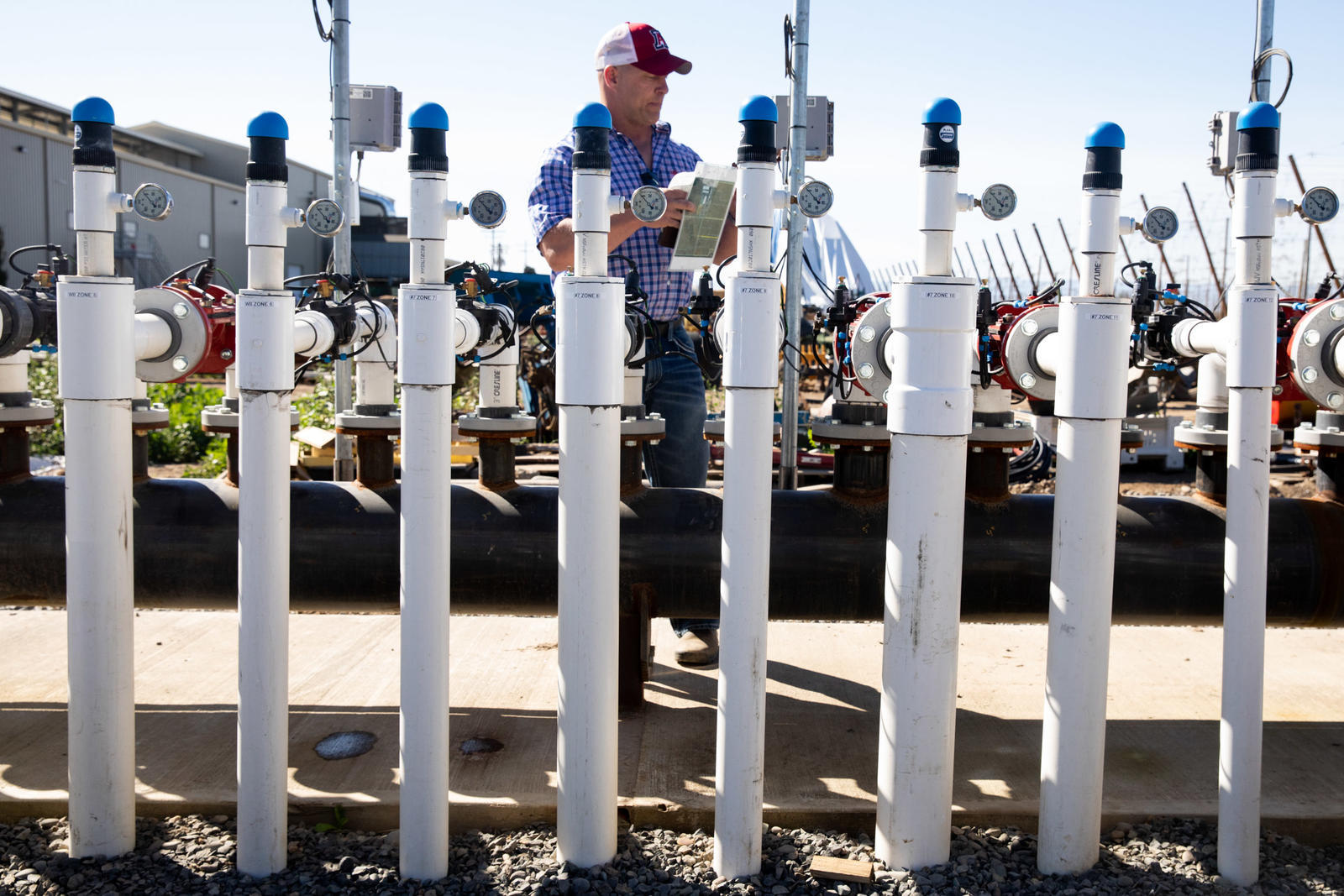
Jeff Perrault works with harvested hops at Perrault Farms in Toppenish in Yakima County on Sept. 16, 2021.
Matt M. McKnight/Crosscut
Perrault Farms keeps extensive data on the use of different inputs, such as water, pesticides and propane, during the hop production process.
Such data will be crucial as the hop industry works to measure the carbon footprint of every aspect of the hop production process, from planting to processing when hops are dried and formed into pellets and other products.
With breweries evaluating the carbon footprint of their production process, they are looking to suppliers to provide that same data, said Levi Wyatt, social responsibility coordinator at Yakima Chief Hops.
Yakima Chief Hops is integrating a water usage and carbon footprint assessment in its Green Chief certification program. Growers receive a green rating if they show they are meeting farm quality and sustainability standards.
Wyatt said the assessment gives growers a benchmark. Yakima Chief Hops will work with growers to improve through information on practices that conserve water and reduce one’s carbon footprint.
“We’re supplying them with information constantly so they can continue to track the overall impact of that beer.”
The data that growers collect for the Yakima Chief Hops assessment will also be valuable to breweries producing beers with a low or zero carbon footprint. Recently New Belgium Brewing, the Fort Collins, Colorado, company, released a carbon-neutral version of its popular Fat Tire beer.
“We’re supplying them with information constantly so they can continue to track the overall impact of that beer,” Wyatt said.
Hop Growers of America, a Yakima-based industry organization, is also doing a life-cycle assessment and carbon sequestration study to articulate the carbon footprint of the hop production process.
The life cycle assessment will track inputs and energy consumption throughout the hop production process — from planting to harvesting to delivering dried and processed hops to breweries.
The data from that assessment will also be used in the carbon sequestration study, looking at how carbon is captured and released throughout the hop production process. The organization plans to complete both the life cycle assessment and the carbon sequestration study by next year.
The data gathered could be beneficial in several ways. Ann George, executive director of the Hop Growers of America, said the information from such studies could help develop a program to sell carbon credits.
“Is there the opportunity for [hop growers] to develop a symbiotic system? Whereby hop growers could have excess carbon credits and exchange them to breweries who may be trying to level out their carbon use and say we have a neutral carbon footprint.”
“Let’s say the hop industry ends up with a positive carbon footprint,” George said. “Is there the opportunity for [hop growers] to develop a symbiotic system? Whereby hop growers could have excess carbon credits and exchange them to breweries who may be trying to level out their carbon use and say we have a neutral carbon footprint.”
But such a program is a ways away, George said. “There are a lot of different potentials, but before we can discuss those, we need to know where we are on that spectrum.”
Discussions about climate change can become politically charged to some, especially in a more conservative region like Central Washington.
Rather than focus on the term or get in the weeds about what constitutes climate change, it’s easier to address the need to respond to conditions that affect their ability to produce quality hops, said Maggie Elliot, science and technical director of the Hop Growers of America.
The industry is looking to growers like Perrault Farms, which have already taken action.
Jeff Perrault said that while there may be more costs in the short term, he sees long-term economic benefits. For example, finding ways to reduce fuel usage minimizes the amount of carbon dioxide released into the air, and it can also translate to significant cost savings.
And ultimately, that means Perrault’s family can grow a better crop in the years to come.
“We’re always looking for better means of growing our plants and being more efficient and more sustainable for future generations,” Perrault said. “My brothers and I want to have something to hand down to our kids, for them to do the same. It’s in our best interest to be sustainable as possible.”
Visit crosscut.com/donate to support nonprofit, freely distributed, local journalism.

